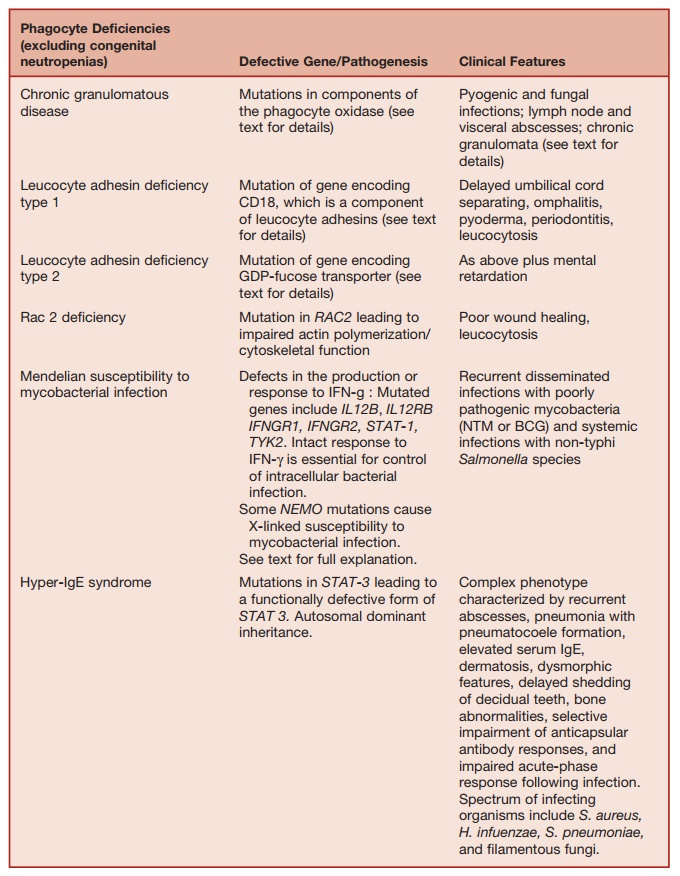Chapter: Essential Clinical Immunology: Immunological Aspects of Immunodeficiency Diseases
Defects in Leucocyte Migration - Phagocyte Deficiencies
Defects in Leucocyte Migration
To reach the sites of inflammation, neutrophils need to migrate across the endothelium into sites of inflammation. For this process to be initiated, sialyl LewisX, which is expressed on the surface of leucocytes,
Leucocytes, which are transiently arrested by the previous inter-action, need to bind tightly to the endothe-lial surface by a second set of interactions. This is between the protein lymphocyte function-associated antigen-1(LFA-1) LFA-1 expressed on the leucocyte surface and its ligand intercellular adhesion molecule-1 expressed on the luminal surface of acti-vated endothelial cells. Leucocyte emigra-tion into the tissues follows these adhesion events. LFA-1 is one of a set of three cell-surface heterodimers composed of a com-mon β chain (CD18) with three separate α chains called CD11a, b, and c. CD18-CD11a heterodimers form LFA-1, CD18/CD11b
Table 5.8 Defects in Phagocyte Function

LFA-1 is required for leucocyte adhesion to endothelial cells while CR3 and CR4 act as receptors for activated complement, aiding ingestion of opsonized microorganisms. Mutation of the gene encoding CD18 (resulting in the lack of expression of LFA-1, CR3, and CR4) results in an inherited primary immunode-ficiency called leucocyte adhesin deficiency type 1(LAD1). Mutations of the enzyme GDP-fucosyl transferase prevents post-transcriptional fucosylation of proteins. Such individuals cannot synthesize sialyl LewisX. This condition is called leucocyte adhesion deficiency type 2. Leucocytes of the patient with LAD1 and 2 exhibit impaired ability to adhere to endothelial walls and therefore cannot migrate into infected sites.
These patients typically present in early childhood with recurrent pyogenic infection of skin, respiratory, and gastro-intestinal tracts as well as mucous mem-branes. Poor wound healing and delayed umbilical cord separation are typical. Because of impaired neutrophil migration, these patients develop a leucocytosis and pus fails to form at sites of infection. These inherited disorders are typically associated with severe gingivitis and periodontal disease, again indicating the particular importance of normal neutrophil function for maintenance of the health of the den-tal crevice. Outcome in both conditions is poor, with early death. BMT is curative in LAD1, and oral fucose supplementation is beneficial in LAD2.
Related Topics